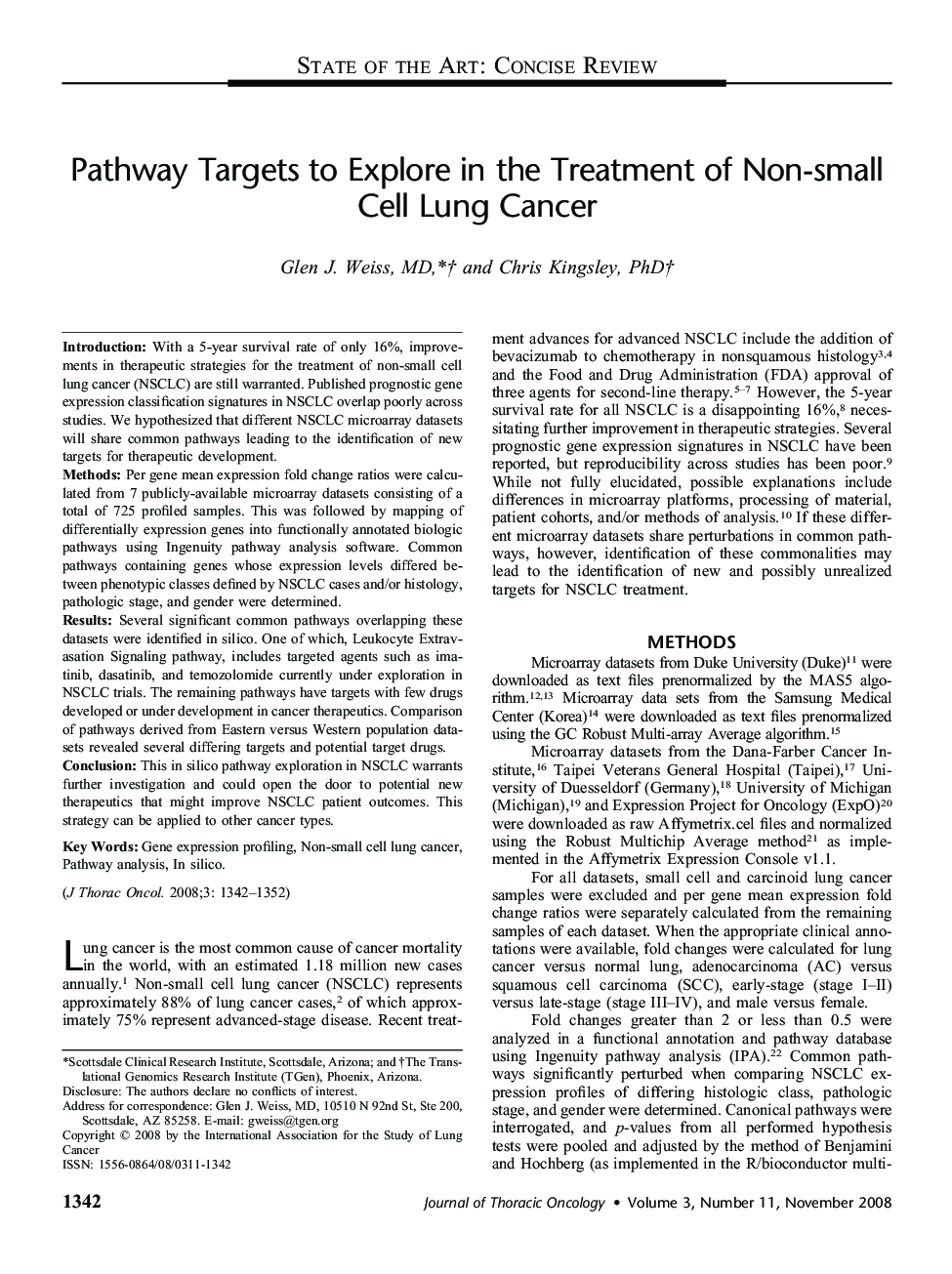| Article ID | Journal | Published Year | Pages | File Type |
|---|---|---|---|---|
| 3992260 | Journal of Thoracic Oncology | 2008 | 11 Pages |
IntroductionWith a 5-year survival rate of only 16%, improvements in therapeutic strategies for the treatment of non-small cell lung cancer (NSCLC) are still warranted. Published prognostic gene expression classification signatures in NSCLC overlap poorly across studies. We hypothesized that different NSCLC microarray datasets will share common pathways leading to the identification of new targets for therapeutic development.MethodsPer gene mean expression fold change ratios were calculated from 7 publicly-available microarray datasets consisting of a total of 725 profiled samples. This was followed by mapping of differentially expression genes into functionally annotated biologic pathways using Ingenuity pathway analysis software. Common pathways containing genes whose expression levels differed between phenotypic classes defined by NSCLC cases and/or histology, pathologic stage, and gender were determined.ResultsSeveral significant common pathways overlapping these datasets were identified in silico. One of which, Leukocyte Extravasation Signaling pathway, includes targeted agents such as imatinib, dasatinib, and temozolomide currently under exploration in NSCLC trials. The remaining pathways have targets with few drugs developed or under development in cancer therapeutics. Comparison of pathways derived from Eastern versus Western population datasets revealed several differing targets and potential target drugs.ConclusionThis in silico pathway exploration in NSCLC warrants further investigation and could open the door to potential new therapeutics that might improve NSCLC patient outcomes. This strategy can be applied to other cancer types.
